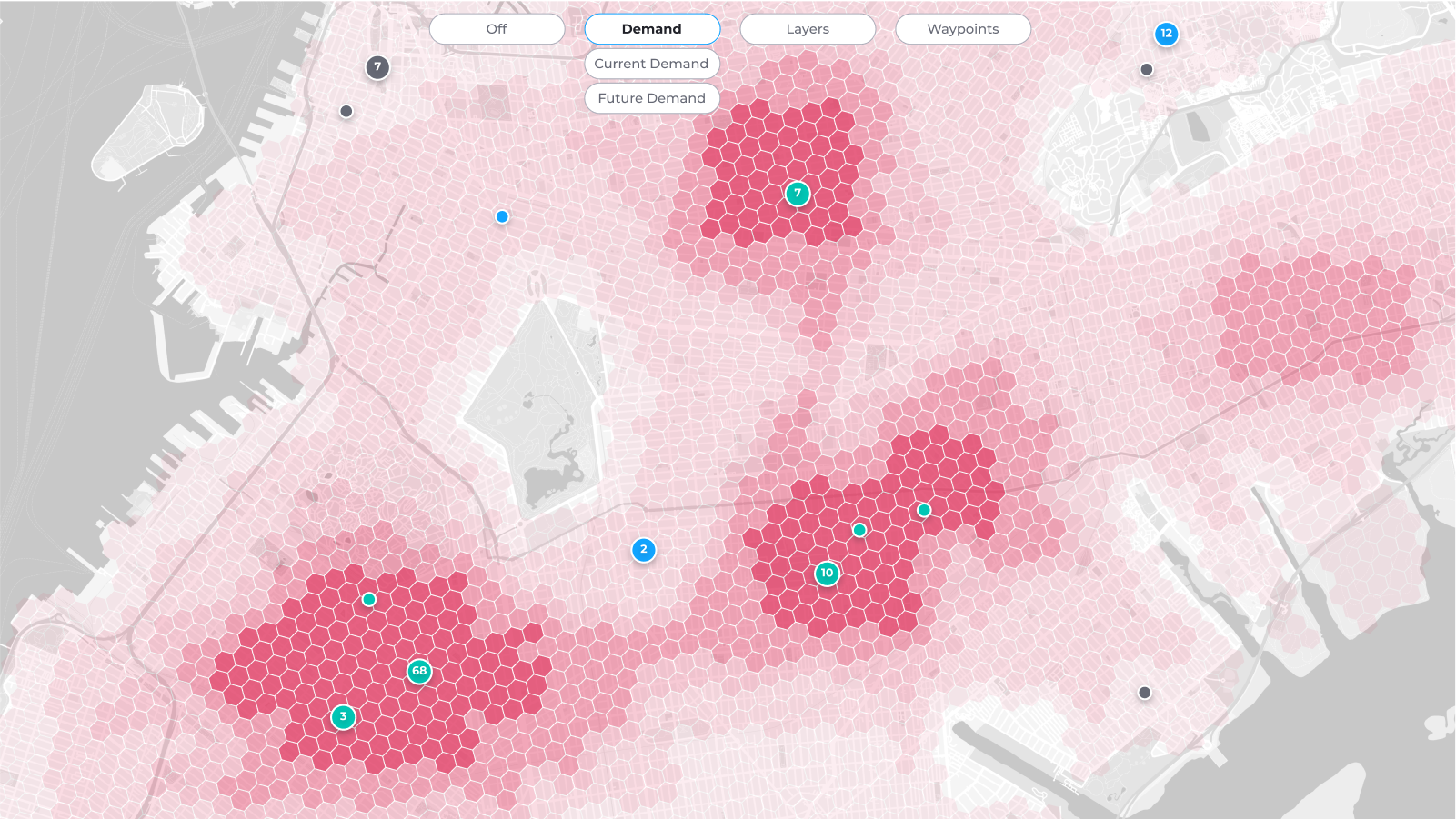







AI for Fleet Management: The AI Revolution in Fleet Management Optimization
The AI revolution is upon us, and while it may seem complex, fleet managers who already leverage data-based solutions are well-positioned to benefit from AI in fleet management. The question is, which of the AI tools out there should you start with?
What would be your best path to leverage its power? To drive superior performance, reduce costs, and deliver exceptional service to your customers? This post aims to ensure you are informed of your options, and of how to get started with AI for fleet management.
As we continue our exploration of AI's transformative solutions for fleets —following our deep dive into last-mile delivery operations—we turn our attention to how AI can be used to optimize fleet management.
Challenges faced by fleet managers
Fleet managers across industries face increasingly complex operations, while pressures to reduce costs, improve safety, minimize environmental impact, and deliver superior service levels continue to mount. Traditional fleet management approaches simply cannot keep pace with the dynamic demands of modern transportation operations.
Managing and optimizing vehicle utilization rates remains a challenge. Maintenance costs continue to escalate, often accounting for 15-20% of total fleet expenses, while unplanned downtime disrupts operations and erodes customer satisfaction.
Using AI fleet management software

Artificial intelligence introduces new tools that transform fleet management by enabling better visibility, more accurate predictions, streamlined workflows, and powerful automation across all operational dimensions.
Predictive maintenance and downtime reduction
AI-powered predictive maintenance represents one of the most immediate and impactful applications of artificial intelligence in fleet operations, and it can lead to an up to 35% reduction in breakdowns, while reducing maintenance costs by 32%.
By analyzing thousands of data points from vehicle sensors, telematics systems, and operational patterns, AI algorithms can predict failures. The result is maintenance scheduling that prevents breakdowns, extends vehicle lifecycles, and optimizes maintenance spend.
Moreover, using AI to integrate maintenance with the fleet's operational data and requirements, combined with a robust automation engine, ensures that maintenance, cleaning, T&R, and other tasks are not indefinitely delayed. It also minimizes their impact on regular operations, reducing downtime by as much as 71% These systems enable fleet managers to shift from a reactive maintenance culture to a proactive management strategy.
Advanced Driver Behavior Analysis and Safety
AI allows fleet safety to move from reactive incident management to proactive risk prevention. Telematics and computer vision systems analyze driver behavior in real-time, identifying dangerous patterns such as speeding, harsh braking, distraction, aggressive driving, and safety violations before they result in incidents. These systems provide personalized coaching and intervention as required, and alert managers in real-time when necessary.
Moreover, AI can implement safety considerations across every facet of fleet activity, from route planning to task allocation.
Dynamic Route and Resource Optimization
AI-powered route optimization using real time fleet tracking systems analyzes work requirements alongside traffic patterns, weather conditions, driver availability, vehicle capacity and availability, customer priority levels, and historical performance data. This allows it to create truly optimized operational plans. These plans take into account hundreds of variables simultaneously and optimize operations across multiple KPIs. Advanced AI systems can also adapt these plans dynamically as conditions change throughout the day.
Depending on your fleet’s priorities, route optimization can generate a 15-20% improvement in fuel efficiency, a 20-25% increase in daily service capacity, and an over 10% reduction in miles driven, alongside substantial improvements in customer satisfaction metrics. The technology enables fleet managers to handle more complex operations with fewer resources while maintaining or improving service levels.

Intelligent Demand Forecasting
AI excels at pattern recognition and prediction, making it invaluable for demand forecasting in fleet operations. By analyzing historical usage patterns, seasonal variations, economic indicators, weather forecasts, and local events, AI systems can accurately predict demand fluctuations across different time horizons.
This predictive capability enables fleet managers to optimize vehicle deployment, adjust staffing levels, and position assets strategically before demand peaks occur. Aligning resources precisely with anticipated needs.

Simulation and Digital Twins
One effective way to utilize AI for fleet optimization is to create simulations and digital twins to model, test, and plan operational activities before they are implemented in the real world. Be it for new market penetration, making changes to the fleet infrastructure, or implementing new fleet policies.
A/B testing fleet strategies has become a staple for advanced fleet managers who simulate a wide range of scenarios to understand the impact of operational decisions, without the risks or costs of live execution, thus using digital twins and simulations to bridge the gap between planning and reality.
AI for optimized fleet management is happening now
To sum up, here are the most important ways in which AI will affect fleet management:
- Predictive maintenance will improve vehicle safety and help cut costs
- Automated tasks will reduce downtime significantly
- Optimizing routes and asset utilization will significantly improve fleet efficiency
- Demand forecasting will make fleet rightsizing and asset allocation optimized
- Improved analytics will help improve driver safety
Fleet managers who embrace this transformation can build a sustainable competitive advantage, while those who delay may find themselves increasingly disadvantaged in an AI-powered marketplace. Moreover, those adopting AI often enjoy significantly less administrative overhead and greater confidence in their decisions, freeing up resources for working on strategy and long-term planning.
The time for AI in fleet management is now. The technology is proven, the benefits are clear, and the competitive advantages are substantial. Act decisively and implement AI-driven fleet management optimization to position yourself as a leader in the fleet industry. Contact our team if you need more information on how to start.

Table of сontents
Stay up to date!

Stay Up To Date!




.png)







